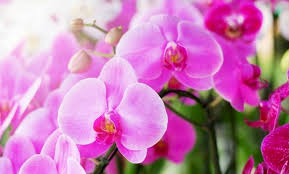# Tips for Caring for White Egg Orchids During Sudden Weather Changes

White Egg Orchids, also known as *Dendrobium*, are beloved for their stunning beauty and delicate fragrance. However, these orchids can be sensitive to changes in environmental conditions, which can affect their health and blooming ability. Sudden weather changes, such as abrupt temperature fluctuations, high humidity, or unexpected droughts, can stress these plants. This comprehensive guide provides essential tips for caring for White Egg Orchids during these transitions to ensure their vitality and longevity.
## Table of Contents
1. **Understanding White Egg Orchids**
– 1.1 Characteristics
– 1.2 Growth Requirements
2. **The Impact of Sudden Weather Changes**
– 2.1 Temperature Fluctuations
– 2.2 Humidity Changes
– 2.3 Light Variations
3. **Essential Care Tips for Sudden Weather Changes**
– 3.1 Monitoring Temperature
– 3.2 Adjusting Humidity Levels
– 3.3 Managing Light Exposure
4. **Watering Techniques**
– 4.1 Importance of Proper Watering
– 4.2 Adjusting Watering Frequency
– 4.3 Signs of Overwatering and Underwatering
5. **Nutritional Needs**
– 5.1 Fertilizing During Stress
– 5.2 Choosing the Right Fertilizer
– 5.3 Frequency of Feeding
6. **Pest and Disease Management**
– 6.1 Common Pests Affecting Orchids
– 6.2 Preventive Measures
– 6.3 Treatment Options
7. **Pruning and Maintenance**
– 7.1 Importance of Pruning
– 7.2 Best Practices for Pruning
8. **Creating an Ideal Environment**
– 8.1 Temperature Control
– 8.2 Humidity Maintenance
– 8.3 Using Grow Lights
9. **Conclusion**
– 9.1 Final Thoughts
—
## 1. Understanding White Egg Orchids
### 1.1 Characteristics
White Egg Orchids, belonging to the *Dendrobium* genus, are native to tropical and subtropical regions of Asia. They are known for their unique cylindrical pseudobulbs and clusters of elegant white flowers, which can also exhibit shades of cream or yellow. The flowers typically bloom in late winter to early spring and can last for several weeks, making them a popular choice for floral displays and indoor gardens.
### 1.2 Growth Requirements
To thrive, White Egg Orchids require specific growth conditions:
– **Temperature**: Ideal temperatures range between 65°F to 85°F (18°C to 29°C) during the day and slightly cooler at night.
– **Humidity**: They prefer humidity levels between 40% to 70%.
– **Light**: Bright, indirect light is essential, with some direct sunlight in the morning or late afternoon.
– **Water**: Regular watering is necessary, but the potting medium must dry out between watering sessions.
## 2. The Impact of Sudden Weather Changes
### 2.1 Temperature Fluctuations
Orchids are particularly sensitive to rapid temperature changes. Sudden drops or spikes in temperature can lead to stress, resulting in leaf drop, stunted growth, or even death.
**Symptoms of Temperature Stress**:
– Yellowing leaves
– Wilting flowers
– Stunted growth
### 2.2 Humidity Changes
Humidity levels significantly affect orchid health. A sudden decrease in humidity can cause the plant to become dehydrated, while excessive humidity can lead to fungal issues.
**Signs of Humidity Stress**:
– Leaf curling or browning
– Root rot in overly humid conditions
### 2.3 Light Variations
Sudden changes in light exposure can impact blooming and growth. Orchids may not bloom if they do not receive adequate light, while too much direct sunlight can scorch the leaves.
**Light-Related Issues**:
– Leaf burn from excessive sunlight
– Lack of flowering due to insufficient light
## 3. Essential Care Tips for Sudden Weather Changes
### 3.1 Monitoring Temperature
To protect your White Egg Orchids from temperature fluctuations:
– **Use Thermometers**: Place thermometers in the growing area to monitor temperatures closely.
– **Avoid Drafts**: Keep orchids away from drafty windows or doors that can introduce sudden temperature changes.
### 3.2 Adjusting Humidity Levels
Maintaining optimal humidity is crucial:
– **Humidity Trays**: Use trays filled with water and pebbles to increase humidity around the plant.
– **Misting**: Lightly mist the leaves in the morning, but avoid excessive moisture that can promote fungal growth.
### 3.3 Managing Light Exposure
Proper light management is essential for healthy orchids:
– **Adjust Placement**: Move orchids to a spot where they receive bright, indirect light, especially during periods of increased sunlight.
– **Sheer Curtains**: Use sheer curtains to diffuse direct sunlight and protect the orchids from light stress.
## 4. Watering Techniques
### 4.1 Importance of Proper Watering
Watering is one of the most critical aspects of orchid care, especially during weather changes. Both overwatering and underwatering can harm the plant.
### 4.2 Adjusting Watering Frequency
When weather changes occur, adjust your watering schedule accordingly:
– **Increased Temperature**: Water more frequently if temperatures rise, as orchids will require more moisture.
– **Lower Humidity**: If humidity drops, increase watering frequency but ensure the potting medium dries out between waterings.
### 4.3 Signs of Overwatering and Underwatering
Recognizing the symptoms of overwatering and underwatering is vital:
– **Overwatering**: Yellowing leaves, mushy roots, and fungal growth.
– **Underwatering**: Wrinkled or shriveled leaves, dry pseudobulbs.
## 5. Nutritional Needs
### 5.1 Fertilizing During Stress
During weather changes, nutritional needs may vary. Consider adjusting your fertilization routine:
– **Fertilize Less**: Reduce the frequency of fertilization during extreme weather to avoid stressing the plant further.
– **Use Diluted Fertilizer**: When fertilizing, use a diluted solution to prevent root burn.
### 5.2 Choosing the Right Fertilizer
Selecting the right fertilizer is crucial for healthy growth:
– **Balanced Fertilizer**: Choose a balanced fertilizer with equal parts nitrogen, phosphorus, and potassium (e.g., 30-10-10).
– **Orchid-Specific Formulas**: Consider using fertilizers formulated specifically for orchids to meet their unique needs.
### 5.3 Frequency of Feeding
Adjust the frequency of feeding based on the plant’s condition:
– **Regular Feeding**: During the growing season (spring and summer), feed every two weeks.
– **Reduced Feeding**: In fall and winter, reduce feeding to once a month, especially during colder weather.
## 6. Pest and Disease Management
### 6.1 Common Pests Affecting Orchids
Weather changes can lead to pest infestations, which can further stress your orchids:
– **Mealybugs**: Small, white, cottony insects that suck plant sap.
– **Scale Insects**: Brown or black bumps on leaves that can cause leaf drop and stunted growth.
– **Spider Mites**: Tiny pests that thrive in dry conditions, causing yellow spots on leaves.
### 6.2 Preventive Measures
To prevent pest issues:
– **Regular Inspections**: Check your orchids regularly for signs of pests or disease.
– **Cleanliness**: Keep the growing area clean and free from debris that can harbor pests.
### 6.3 Treatment Options
If pests are detected, consider the following treatments:
– **Insecticidal Soap**: A natural remedy that can be sprayed directly onto affected areas to eliminate pests.
– **Neem Oil**: A natural pesticide that can deter pests while being gentle on the plants.
## 7. Pruning and Maintenance
### 7.1 Importance of Pruning
Pruning helps maintain the health of White Egg Orchids:
– **Removing Dead Material**: Cut away dead or yellowing leaves to prevent disease and promote new growth.
– **Encouraging Airflow**: Prune overcrowded areas to improve airflow around the plant, reducing humidity-related issues.
### 7.2 Best Practices for Pruning
When pruning:
– **Use Clean Tools**: Always use clean, sharp scissors or pruning shears to prevent disease transmission.
– **Make Clean Cuts**: Cut at an angle to promote healing and prevent moisture retention.
## 8. Creating an Ideal Environment
### 8.1 Temperature Control
Maintain a stable temperature environment for your orchids:
– **Heating Mats**: Use heating mats during cold spells to provide warmth from below.
– **Air Conditioning**: In hot weather, ensure the growing area is well-ventilated and cool.
### 8.2 Humidity Maintenance
Keeping humidity levels stable is essential:
– **Humidifiers**: Use humidifiers in the growing area to maintain consistent humidity levels, especially in dry conditions.
– **Grouping Plants**: Grouping orchids together can help maintain humidity through transpiration.
### 8.3 Using Grow Lights
In cases of low natural light, consider using grow lights:
– **Full-Spectrum Lights**: Use full-spectrum grow lights that mimic natural sunlight, promoting healthy growth and blooming.
– **Light Duration**: Ensure that orchids receive at least 12-14 hours of light daily during the growing season.
## 9. Conclusion
### 9.1 Final Thoughts
Caring for White Egg Orchids during sudden weather
changes requires diligence and adaptability. By closely monitoring environmental conditions and adjusting care practices, you can ensure that these beautiful orchids continue to thrive.
The tips outlined in this guide aim to equip orchid enthusiasts with the knowledge needed to navigate the challenges of fluctuating weather, promoting healthy growth and vibrant blooms. With proper care, your White Egg Orchids will not only survive but flourish, providing you with years of beauty and enjoyment.

